Soap making has become a popular DIY craft that allows you to create your own soap bars tailored to your personal preference. But one common challenge soap makers often face is making their homemade soap harder and longer-lasting in the shower.
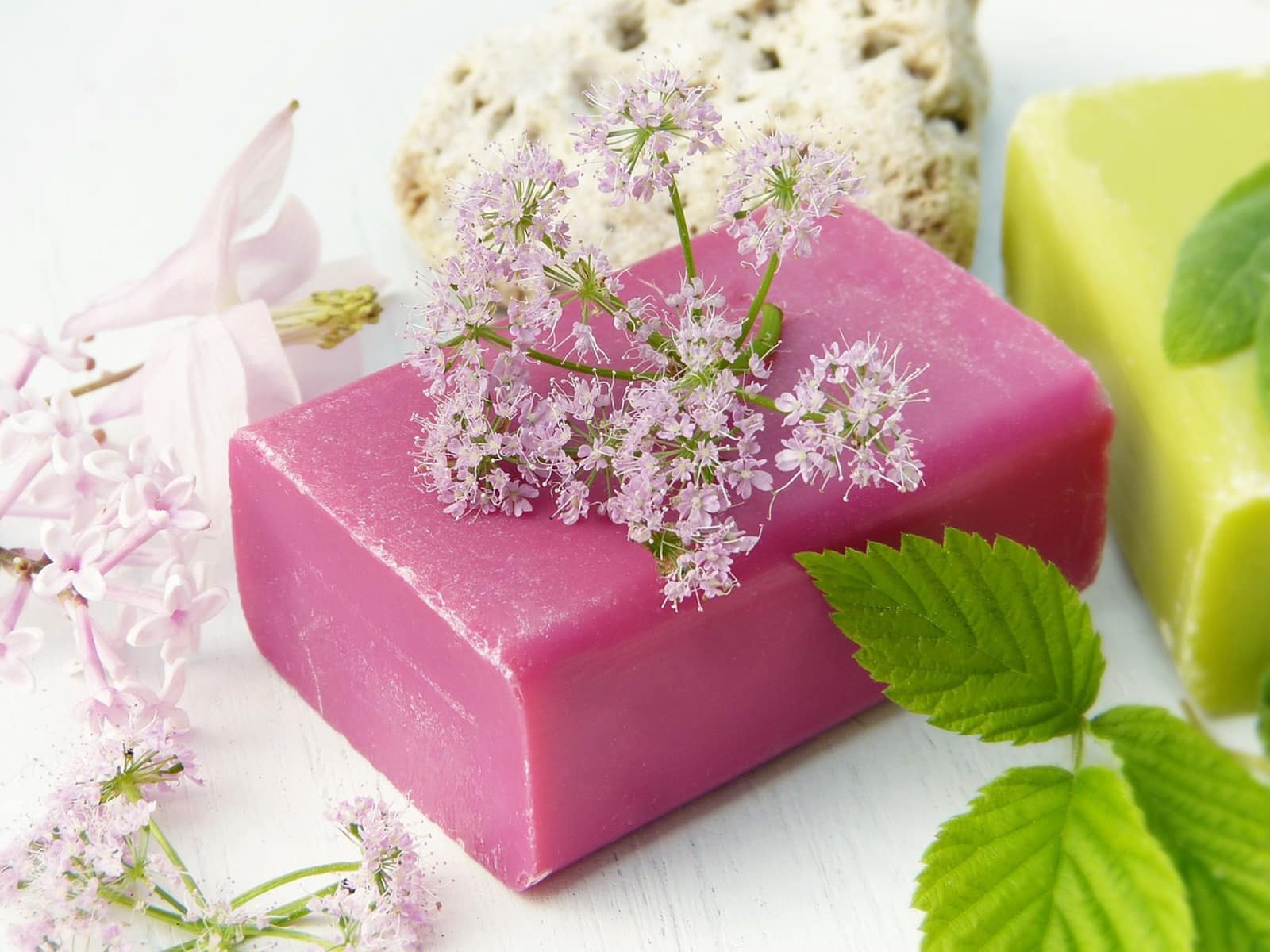
Fortunately, there are many simple techniques and tips, that can make cold and hot process soap harder and more durable, ensuring a longer lifespan and a luxurious lather every time you use it. In this guide, I will share valuable insights on how to make a harder bar of soap as well as a simple recipe.
1. Use Hard Oils and Fats
This might be the most straightforward way to go about producing a hard bar of soap. If you get your recipe right from the get go, you won't have to add anything later on.
The choice of different oils and fats you use in your soap recipe can significantly impact the hardness and longevity of your soap. Hard oils and fats, such as coconut oil, palm oil, palm kernel oil, tallow, lard and shea butter, are known for their ability to produce a harder bar of soap. These oils contain higher amounts of saturated fats than soft oils, which create a more solid structure in the soap.
How do you know how much saturated fats is in your soap recipe? The easiest way to find out is to plug your recipe into a lye calculator , like soapcalc and and look at the fatty acids profile.
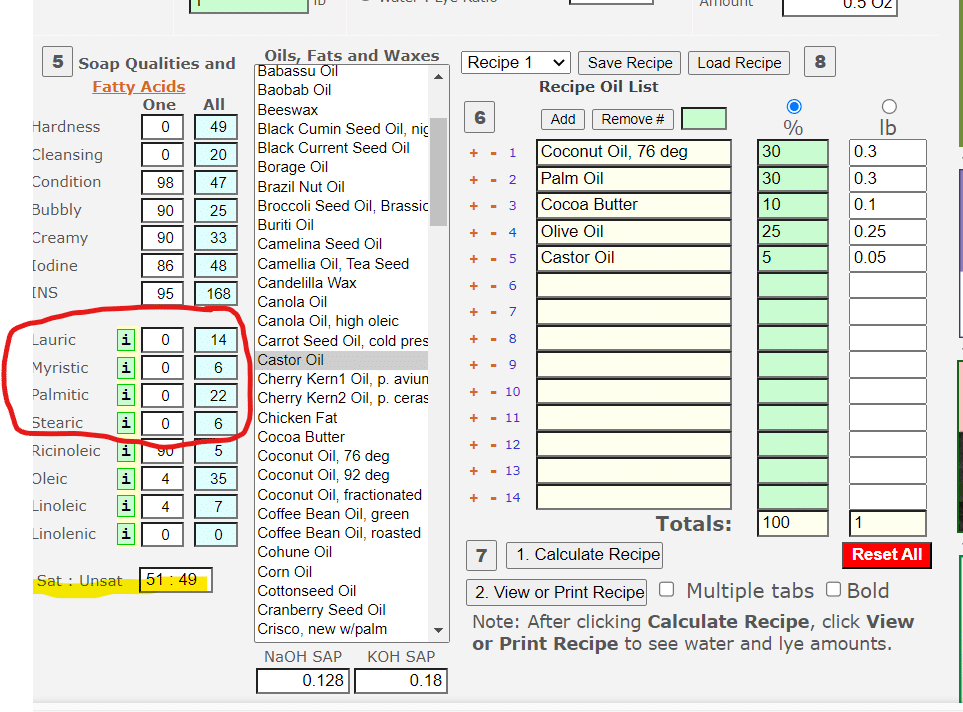
Hard oils are mainly comprised of palmitic, lauric, stearic and myristic fatty acid. On the bottom you will find the saturated: unsaturated fat ratio. A recipe that's saturated fat ratio is slightly above the unsatured fat will be noticeable harder.
Now, you don't want to go too high with the amount of hard oils in order not to offset the balance of your soap. Coconut oil in high amounts can make a bar feel drying on the skin. So, aim for a ratio of between 54:46 and 51:49 that will leave room for plenty of moisturizing liquid oils.
2. Add Sodium Lactate
Sodium lactate is a natural salt derived from the fermentation of sugar, and it can be used as an additive in soap making to increase its hardness. To use sodium lactate, simply dissolve 1-2 teaspoons per pound of oils or fats in the cooled lye solution before adding it to your soap mixture.
Sodium lactate also helps soap release easier and quicker from a soap mold especially silicone molds.
3. Add Beeswax
Beeswax is a great natural addition to a soap recipe if you're looking to create a firm bar of soap. As an added bonus it has plenty of label appeal. Who doesn't love a honey and beeswax themed soap? It's usually used at 1-2% in a recipe. Keep in mind that using beeswax will speed up trace quite a lot. So, be prepared to work quickly and at slightly lower temperatures.
4. Add Stearic Acid
Adding a small amount of stearic acid can certainly help to harden a bar of soap. Stearic acid is a vegetable derived thickening agent that's commonly used in lotions or creams. It's recommended to be used at a 0.5% of your oils in handmade soap.
If you're used to formulating your soap recipes in soapcalc, you can add stearic acid at 0.5% and it will tell you the amount needed. You really don't need a lot to get the desired effect.
Keep in mind that stearic acid will accelerate trace and needs a higher soaping temperature (at least 160 ° F) to stay melted.
5. Allow for a Longer Cure Time
Curing is the process of allowing your soap to fully harden and dry out after it has been made. Allowing your soap to cure for a longer period of time can result in a harder and longer-lasting bar.
During the curing process, excess water evaporates from the soap. While the curing time can vary depending on the recipe, most soap makers recommend curing for at least 4-6 weeks. Sometimes even longer, since soaps made with large amounts of olive oil, like bastille or castile soap need between 6 months to 1 year to cure. Be patient and resist the temptation to use your soap before it has fully cured for the best results.
6. Use a Well-Draining Soap
If you're using handmade soap for the first time, you might be surprised to see that it dissolves quickly if it sits in water for too long. It's something I remind people of when gifting homemade soap.
Properly drying your homemade soap between is really important if you want to enjoy your soap for a long time. Use a soap dish or soap saver that allows for proper drainage and try to keep it away from moisture as much as possible.
7. Add Salt
Salt is another natural additive that can help increase the hardness of soap. Adding salt, such as sea salt, Himalayan salt or plain old table salt, to your soap can help create a harder bar. When using salt in your soap, you would add it to your cooled lye water just as you would with sodium lactate. Use about 1 teaspoon of salt per pound of oils in your recipe for best results.
Simple Hard Soap Recipe
As you can see in the fatty acid breakdown below. The ratio of saturated vs unsaturated oils in this recipe is pretty high on the hard oils side. But I made sure to add plenty of nourishing oils with moisturizing properties to make a balanced bar.
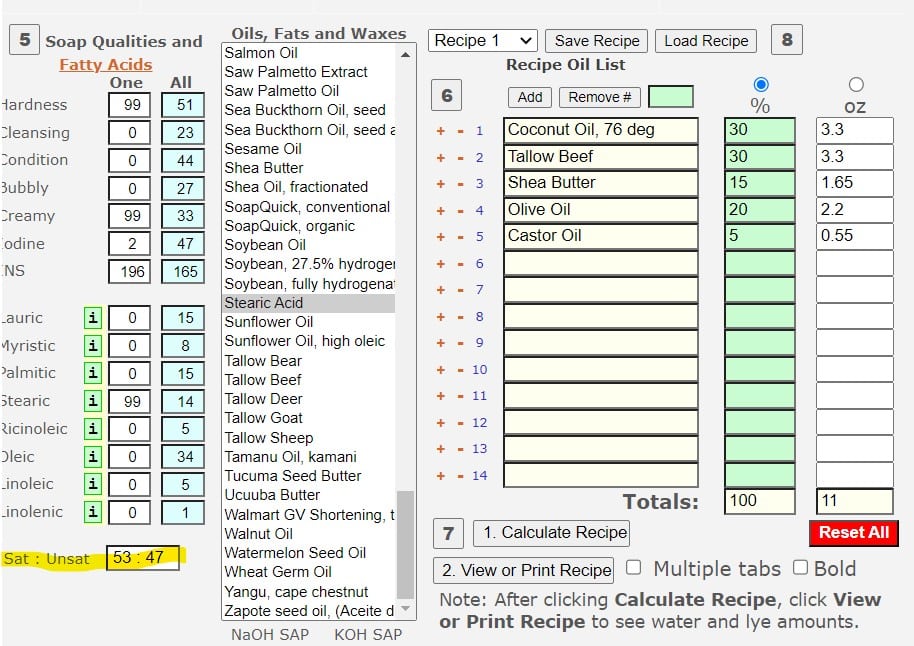
This recipe makes 1 lb of soap and uses a lye concentration of 37%.
Ingredients
- distilled water: 2.7 oz / 76 g
- lye (sodium hydroxide): 1.57 oz / 45 g
- coconut oil (30%): 3.3 oz / 94 g
- tallow (30%): 3.3 oz / 94 g
- olive oil (20%): 2.2 oz / 62 g
- shea butter (15 %): 1.7 oz / 47 g
- castor oil: 0.5 oz / 15 g
- litsea cubeba essential oil (optional): 5 g
Equipment
- gloves
- goggles
- heat resistant container (plastic or stainless steal)
- small plastic cup (to measure lye)
- digital kitchen scale
- stick blender / immersion blender
- medium sized heat resistant container (plastic or stainless steal)
- silicone soap mold or upcycled mold like empty yoghurt cups or plastic food containers
- small plastic spoon
- silicone spatula
Instrutions
- gear up for safety: make sure you wear gloves, goggles, long sleeves throughout the entire soaping process. No kids and pets around and soap in a well-ventilated area
- measure lye into a small plastic cup
- measure water into heat resistant container
- slowly and carefully pour lye into water while continuously stirring. Don't inhale fumes coming off the lye water.
- set aside to cool
- measure coconut oil, tallow and shea butter into a bigger heat resistant container
- melt in microwave (plastic containers only!), over the stove in a pot or water bath
- when fully melted remove from heat
- add olive oil and castor oil
- add essential oil
- stir
- wait until lye solution and melted oils are cooled down to slightly above room temperature
- carefully pour lye water solution into base oils
- using stick blender blend on 10 second bursts until soap batter starts to thicken
- continue stirring using spatula until batter reaches thin pudding stage
- pour soap batter into mold
- set aside in a safe spot for 48 hours
- unmold and cure for 4 weeks
- store soap in small cardboard box away from sunlight and humidity for up to 12 months
- Enjoy!

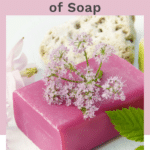
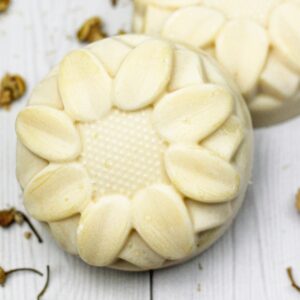
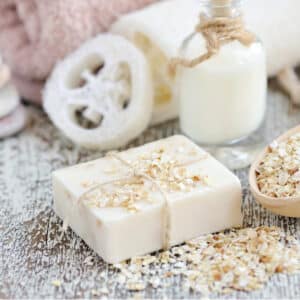

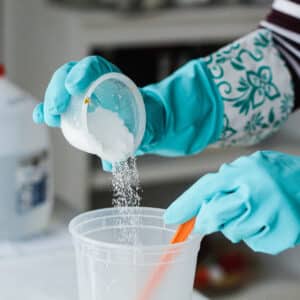
Radha Chari
Hi, I don't want to use tallow, I am a vegetarian. Any other oil I can use instead of tallow.
Thanks,
Radha
Celine
Yes, you can use sustainably sourced palm oil.
Shame
There is no such thing as sustainably sourced palm oil.
Daniel Jeremaih
I do lundary soap but not hard enough should i increase my soduim sophate or i should add soduim lectate and table salt
Celine
Hi Daniel, I've never made laundry soap before so I can't advise you on that.